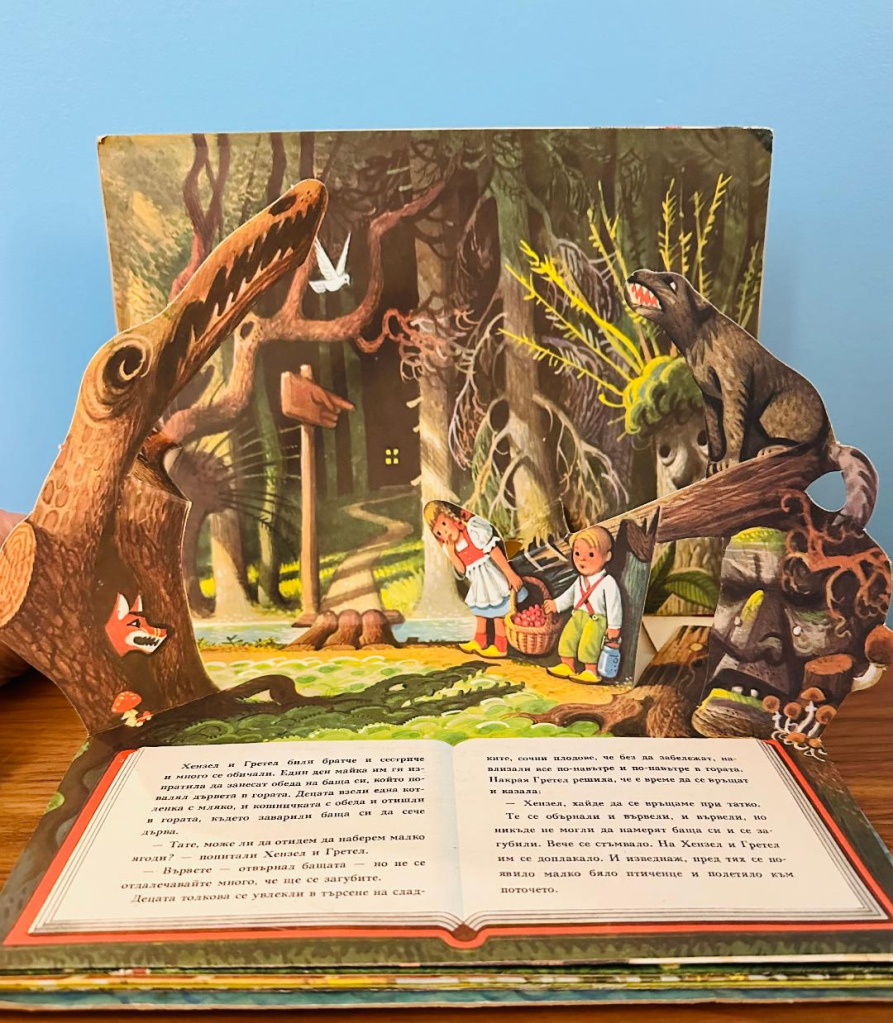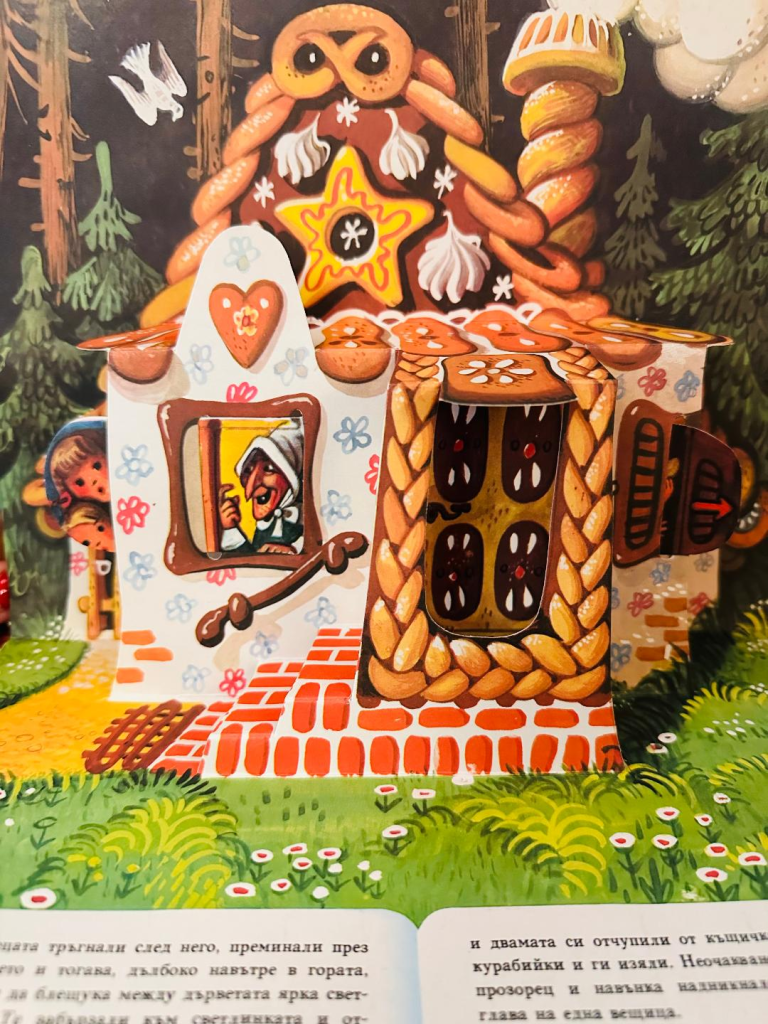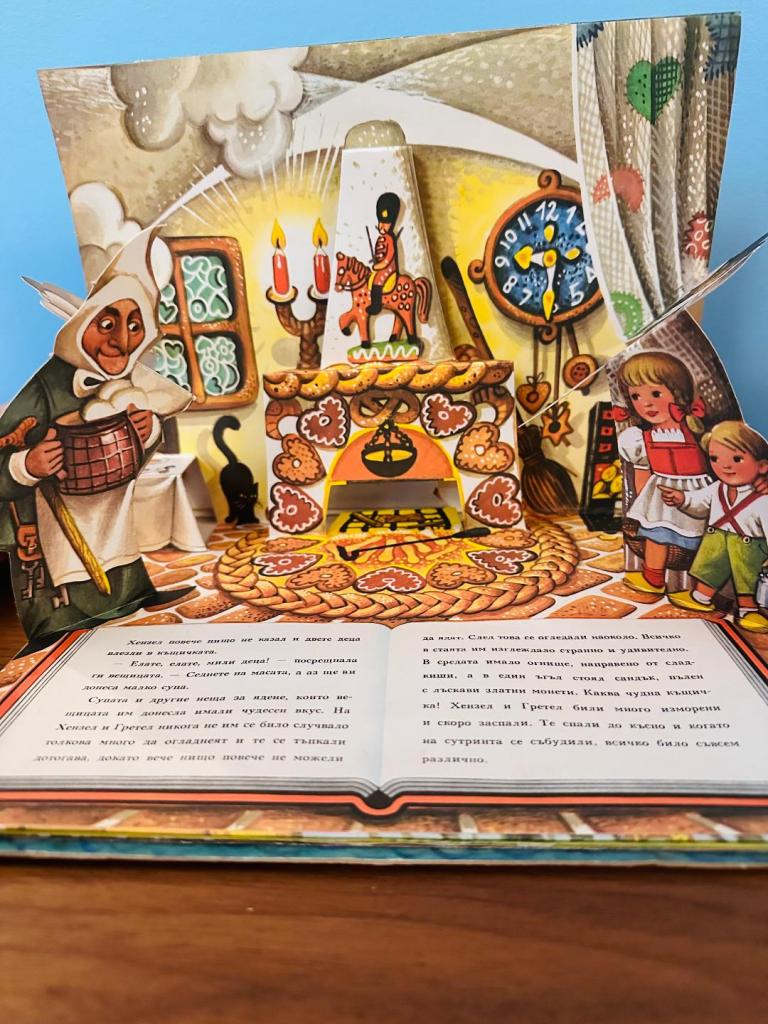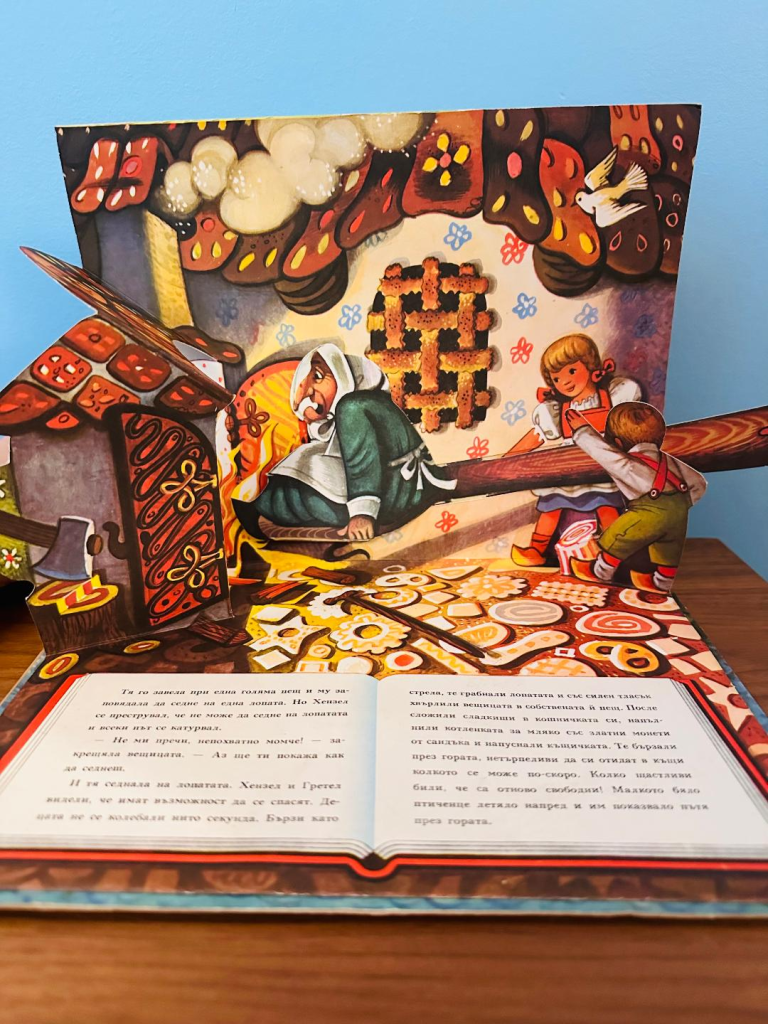
One of the many Mary Poppins effects in my personal life was the sudden desire to retrieve the long-lost books from my childhood spent in Bulgaria in the 1980’s. This old pop-up edition of ‘Hansel and Gretel’ (1979) is the newest addition to my reassembled collection.
The gorgeous illustrations are by Vojtěch Kubašta, a Czech architect, graphic artist, children’s book illustrator and master of the pop-up book. He was the illustrator of the unsigned series of pop-up books tied to “Bambi,” “101 Dalmatians” and other Walt Disney films.

Of course, as a child I wasn’t aware of the authors and illustrators of my beloved books. What mattered then were the stories and the pictures. This is still true, but in addition, I am now fascinated by the creative spirit behind the creations.
I loved fairy tales as a child, and the beautiful illustrations that accompanied these stories heightened my earliest reading experiences. In fact, they are probably the reason why I remember how I felt when I first read them. Going back to these stories as an adult however is an entirely different experience.
The story of “Hansel and Gretel” is a perfect example. As a child I simply enjoyed the story for the story. Two children get lost in the forest, find a house made from sweets and candy, they get trapped and are about to be eaten by an evil witch, when one of them plays a trick on her and sends her into the flames of her oven. Good triumphs over evil, and the ending is happy as the two siblings find their way back home.

Rereading the story now reveals a much deeper meaning that I could not have grasped back then for the obvious reason that I lacked both life experience and understanding of symbols and metaphors.
I would have loved to have the opportunity to discuss “Hansel and Gretel” with P.L. Travers. She wrote about it briefly in her essay “The Fairy -Tale as Teacher”:
Hansel and Gretel. How it beguiles the child with its lollipop house and peppermint doorstep! For us, however, this is only the lure. The trap, the real secret, is the journey through the wood. If you want to find your home, it says (back to the beginnings, becoming as little children) you must scatter something less ephemeral than peas or rose-leaves. Birds will eat one, and the wind will blow the other away. Only by making the path with pebbles – enduring, hardly found, indestructible – can you pick up the trail and escape the witch’s oven which is extinction.

I agree with P.L. Travers that the real secret to the story is the journey through the forest. Yet, what saves the children from the witch’s oven are not the pebbles, but their own cunning; and what leads them back home is a white bird…
For me “Hansel and Gretel” is a story about growing up, survival and tapping into one’s own inner resourcefulness. The message for me is that one cannot use cunning (the pebbles, the rose-petals and breadcrumbs) to avoid the adventure of growing up (the forest), but one must use cunning to survive an ordeal.
The children had to get lost and trapped. They had to learn about evil and danger and how to face it all on their own. It is all about seizing the moment and doing what needs to be done – which is to shove the witch into the fires of the oven – all, without any hesitation. After facing something so terrible and surviving it – who needs pebbles to find their way back home?

Now, what does this story have to do with Christmas? Well, actually it is not the story itself that has to do with Christmas, but a prop from it: the house made of sweets.
Gingerbread houses originated in Germany during the 16th century, but their popularity rose when the Brothers Grimm wrote the story of “Hansel and Gretel” in 1812. It is believed that it sparked a creative renaissance amongst German bakers; apparently a house made of cake and candy is not alluring only to children! With time the cookie-walled houses became associated with Christmas and spread throughout Europe and North America.
We did not have gingerbread houses in Bulgaria when I was a child. I got acquainted with them only when we came to Canada in the 1990’s, but now the decorating of a gingerbread house has become a well-established family tradition, and each year it invariably reminds me of the time when I first read the story of “Hansel and Gretel” and gazed at Kubasta’s beautiful illustrations wishing I could too have a taste of the witch’s house.
I wonder, does Christmas bring back warm memories from your childhood too? I sincerely hope that it does!